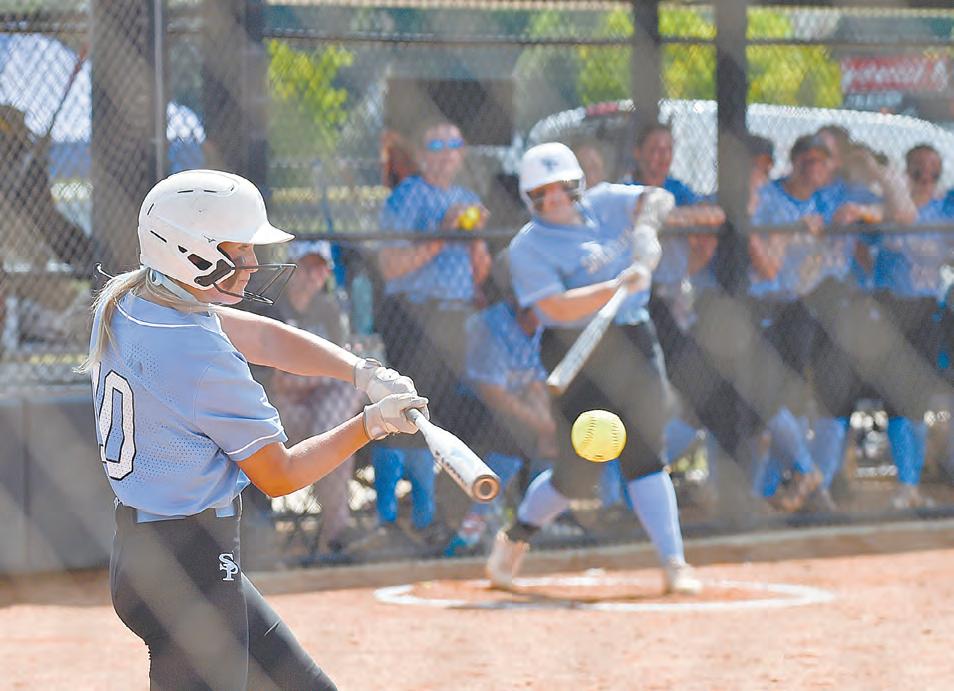
3 minute read
Mortgage rates have risen. Now what?
there are solid reasons to purchase a home now, especially if you’re renting.
“All of the great reasons for buying a house still exist,” Smith said. “We haven’t seen as good of a time to buy for renters, with rent rates going up 20 to 30% in the last two years.”

By LOYD MCINTOSH
When the Federal Reserve raised interest rates in early February to combat inflation, one area of concern for many potential homebuyers was how the Fed’s actions would affect mortgage rates and their ability to afford a new home.
However, Clint Thompson, a mortgage officer with Fairway Independent Mortgage Corp. in Inverness, says the perception that mortgage rates automatically increase following a rise in interest rates is incorrect. “There is always misinformation out there when people hear what the Federal Reserve is doing. They think, ‘Oh gosh, mortgage rates jumped a quarter of a percent,’” Thompson said.
While it is true that interest rates and other signals from the Federal Reserve influence the economy, Thompson said mortgage rates are more closely related to inflation rates than direct action from the Federal Reserve. Thompson explained that the interest rate hike should eventually have the opposite effect on mortgage rates if inflation slows.
“Mortgage rates can come down when the Fed makes a hike, because overall it’s more about inflation than interest rates,” Thompson said. “You may see that 30-year mortgage rates actually improve because the markets interpret that as a positive move.”
Largely due to government spending during the COVID-19 crisis, the U.S. inflation rate grew at a rate of 6.5% in 2022, according to data published by the U.S. Department of Labor in mid-December, after growing to 7.1% in 2021. Among the areas the government spent additional funds, according to Thompson, were mortgage-backed securities and treasuries, which kept mortgage rates from organically adjusting to market forces, a concept known as “quantitative easing.”
“The Fed basically ignored the whole inflation factor and continued to buy treasuries and mortgage-backed securities,” Thompson said. “That artificially kept interest rates down close to 3%.”
As the government slowed quantitative easing measures over the past 12 months and raised interest rates in February, mortgage rates rose from an average of 3% for a typical 30-year mortgage to just over 6% in under a year, While the rapid rise may create sticker shock among homebuyers, Thompson said the market is responding organically to the Federal Reserve’s policies and, although mortgage rates spiked to more than 7% recently, potential homebuyers should start seeing rates lower in the second and third quarter of 2023.
“We’ll just have to see how it all plays out, but the consensus is we should see 30-year mortgage rates close to 5%, maybe even just a fraction below 5%, sometime this summer,” Thompson said.
Fred Smith, owner and operator of The Fred Smith Group RealtySouth agency in Crestline, said the Federal Reserve’s interest rate hike may finally return the local real estate market to a much-needed state of normalcy. Smith said the economic conditions of 2020 through 2022 created unnatural conditions in the market that should stabilize now that mortgage rates have risen.
“People are getting used to the rates. It’s not like they’ve gone up to something that’s unreasonable. They’ve normalized,” Smith said.
“2019 was the last normal market. Then we had 2020, and we worked our way through that market, then we entered a seller’s market in 2021 and 2022 with bidding wars and all that kind of stuff,” Smith said. “Now, I feel it’s going to be a normal 2023.”

With 30-year fixed mortgage rates hovering at 6.9% and housing prices on the rise, what do the current conditions mean for the average homebuyer? Smith and Thompson both recognize that affordability is a factor in many cases but said

For homebuyers for whom a one-point or twopoint rise in rates could cause monthly-payment sticker shock, Smith suggested a couple of strategies. First, he said an interest rate buydown is a viable option or an adjustable rate mortgage, especially for new homebuyers likely to move within five years of their purchase.
“In Crestline, the average homebuyer lives there less than seven years,” Smith said. “If they get a seven-year ARM and they’re moving about every five years, why have a 30-year fixed rate when you can take advantage of a lower interest rate?”
Thompson, who said he believes mortgage rates should settle back down to 3 or 4% over the next few years, suggests a two-for-one buydown mortgage. This option allows the homebuyer to pay 2% lower than the actual rate for the first year of the mortgage, then 1% lower for the second year, then the rate increases to the regular rate in the third year.
At current rates, a homebuyer would pay 4.9% in year one, 5.9% in year two, then 6.9% for the remainder of the loan or, Thompson said, refinance prior to year three.
“If the experts are right,” he said, “that person’s never going to make a payment in the sixes because interest rates will have come down close to 5% and we would have refinanced down before then. So, a two-for-one buydown option can help with affordability.”
Smith also offered one more piece of advice, reminding potential homebuyers they are allowed to write their home’s interest off their taxes. “I’m not going to say it doesn’t matter, but the benefit of being able to write off that additional interest is a wash,” Smith said. “It almost doesn’t matter, because that interest deduction can overcome the difference in that increased interest rate.”

Je


Día










